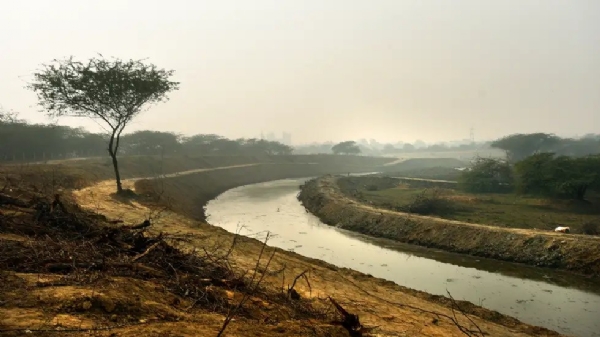India added two Ramsar sites on occasion of World Wetlands Day
After this announcement, India now has a network of 49 Ramsar sites covering an area of 10,93,636 hectares, the highest in South Asia.
Total Views | 121
On the occasion of World Wetlands Day 2022, India added two Ramsar sites, upscaling the number from 47 to 49. As per the announcement, Khijadia Wildlife Sanctuary in Gujarat and Bakhira Wildlife Sanctuary in Uttar Pradesh are the latest Ramsar sites to join the list of 49 protected wetlands in the country.

The announcement was made by the Union Minister for Environment, Forest and Climate Change, Bhupender Yadav, and Haryana Chief Minister Manohar Lal while launching the 'National Wetland Decadal Change Atlas' at Sultanpur National Park in Haryana. Sultanpur National Park is also a Ramsar site, which is located on the outskirts of Gurugram.
Yadav said, "Development and environment should walk together in a perennial manner. 40 percent of biodiversity comes from the wetland."
India has established the largest network of Ramsar Sites in South Asia.
— Bhupender Yadav (@byadavbjp) February 2, 2022
Happy to inform that two more wetlands, Khijadiya Wildlife Sanctuary in Gujarat and Bakhira Wildlife Sanctuary in UP have been added to this prestigious list.
Our tally now stands at 49. pic.twitter.com/RL6BvjtTNB
Furthermore, while stressing the importance of wetland day, he said, "Today is International wetland day. There are more than two lakhs of small ponds in India but there are also a few that needs to be preserved. India has 52 national tiger forests in India. There are two blue-tag beaches in India. We have added two Ramsar sites today."
While, Haryana Chief Minister Manohar Lal Khattar, said, "There are 18,000 ponds in Haryana, now at least 6,000 ponds are overflowing and are full of dirt. We have formed Pond authority to take care of it. This authority this year aims to preserve/ maintain 1,900 ponds."
Breaking | 2 new Ramsar sites (Wetlands of International Importance), Khijadia Wildlife Sanctuary, Gujarat & Bakhira Wildlife Sanctuary, U.P announced.
— DD India (@DDIndialive) February 2, 2022
India now has network of 49 Ramsar sites covering area of 10,93,636 hectares, highest in #SouthAsia @moefcc@tapasjournalist pic.twitter.com/Tc23D70wna
After this announcement, India now has a network of 49 Ramsar sites covering an area of 10,93,636 hectares, the highest in South Asia. Bakhira Wildlife Sanctuary offers a safe wintering and staging ground for a large number of special Central Asian Flyway while Khijadia Wildlife Sanctuary is a coastal wetland with rich avifaunal diversity providing a safe habitat to endangered and vulnerable species.
Ramsar Sites in India are declared under the Ramsar Convention, which was established by UNESCO in 1971. A site is declared as a Ramsar Wetland Site in India if it meets any one of the nine criteria set under the Convention of Wetland.
.
.
Bharati Web






